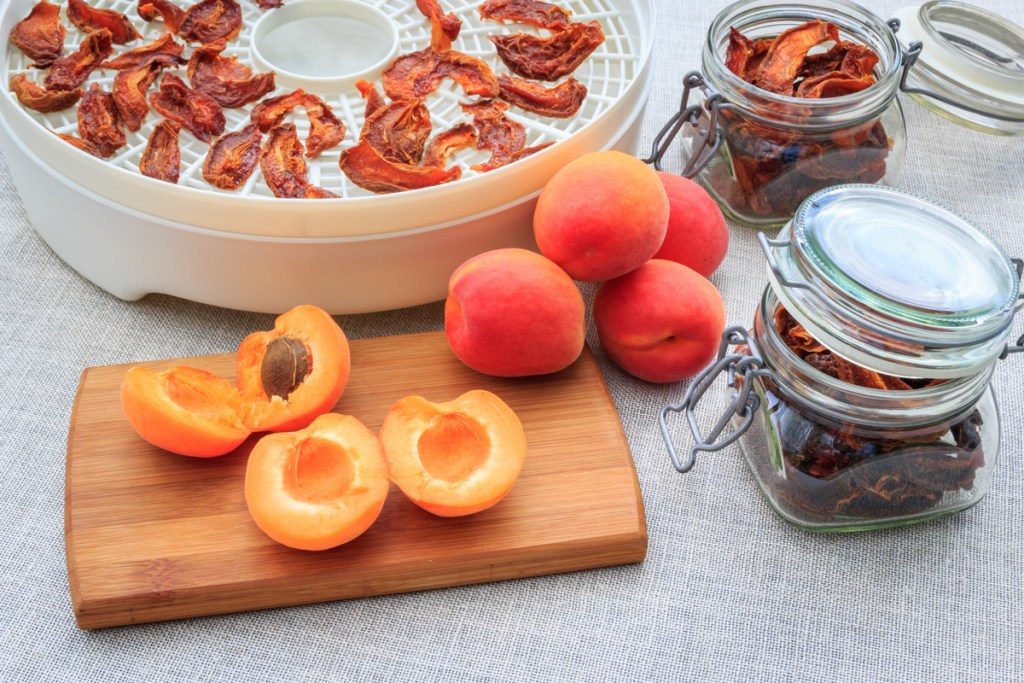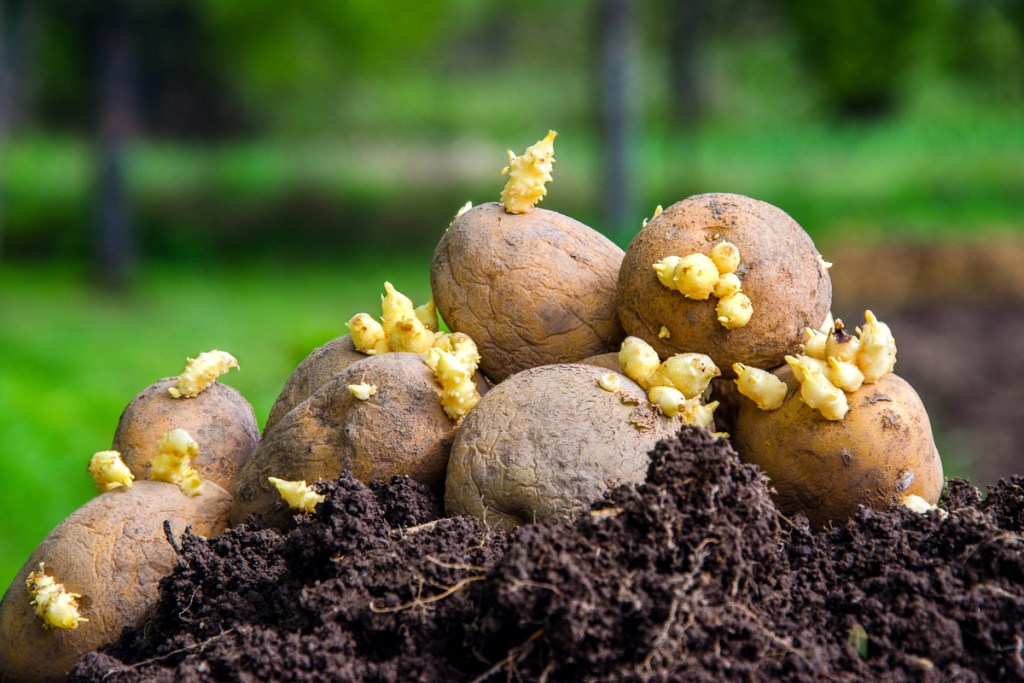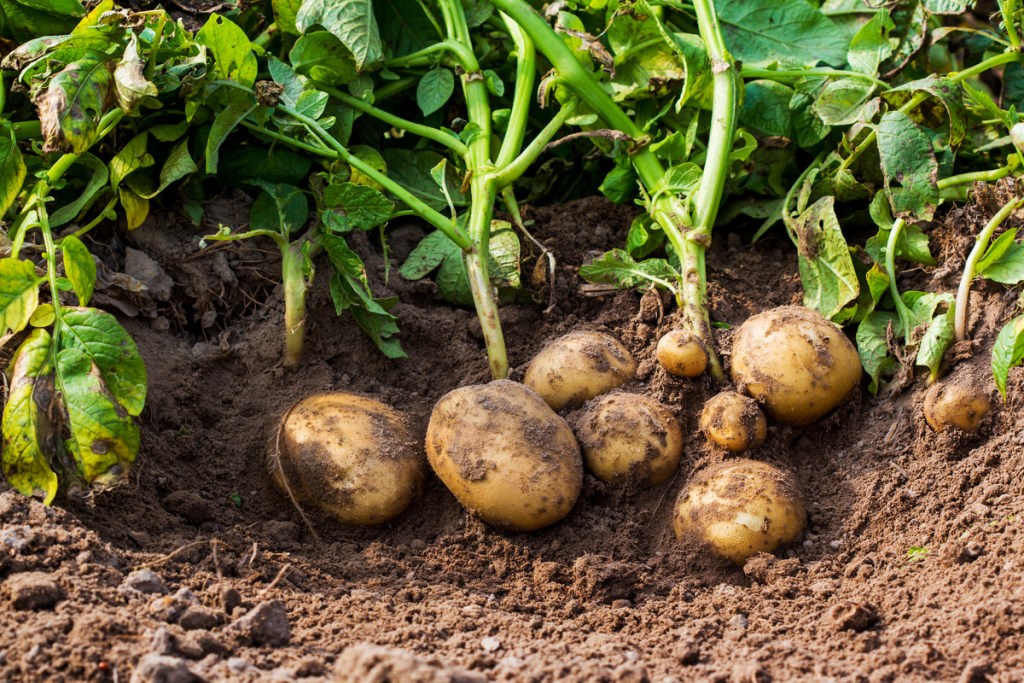Potatoes are a delicious, nutritious, and versatile food. They’re easy to grow and fun to eat, but what exactly are they? As gardeners, we use the phrase “fruits and vegetables,” but what is the key difference between these two categories? More importantly, which category do potatoes fall into, and why does it even matter? If these questions have ever crossed your mind, then you’re in luck! In this handy guide, we’ll explain what makes a fruit a fruit, a vegetable a vegetable, and a potato a potato.

What is a fruit?
Fruits are a specific part of a plant that’s formed to help protect and spread the seeds of the plant. Not all plants produce fruit. Some flowers, for example, form seed heads that help to disperse the seeds. Sunflowers and dandelions are good examples of this. Not all fruits are edible, either. There are plenty of poisonous berries, including yew and holly, which are eaten by birds but are toxic to humans.
Fruit forms when the flower of a plant is pollinated. This pollination causes the seeds to form, and the flower’s ovum starts becoming a fruit. The fruit grows and ripens, and the rest of the flower falls away. The fruit can then be eaten by an animal that later spreads the seeds, or it might fall off the plant, roll a little ways away, and then rot and disperse the seeds that way instead. Some plants will still produce fruit even if the flower isn’t pollinated, which is how most seedless fruit varieties are grown.

What is a vegetable?
Vegetables, on the other hand, are not a specific part of the plant. This is because “vegetable” is a culinary category, not a botanical one. Whether something is a vegetable depends entirely on how we eat it. This also means that all vegetables are edible, and there is no such thing as a poisonous vegetable. A vegetable is any edible part of a plant that’s typically eaten as part of a savory meal or dish, or that’s served alongside a protein. However, not every part of a plant has to be edible for one part to be considered a vegetable.
Since a vegetable can be any part of the plant, fruits can also be vegetables. Tomatoes, for example, are the fruits of the tomato plant. In fact, any edible fruit can technically be a vegetable, depending on how you use it. If you put pineapples on pizza then pineapples are a vegetable. If you enjoy apple-braised pork chops, then apples can be a vegetable as well. However, not all vegetables are fruit. Lettuce, artichokes, and carrots, for example, are the leaves, flower buds, and roots of different plants.

What are potatoes?
So, are potatoes fruits or vegetables? Potatoes are vegetables. More specifically, potatoes are tubers, a type of root vegetable. They aren’t the roots of the potato plant themselves, but they grow off of those roots. Potatoes are certainly edible, and they’re almost exclusively used in savory dishes, with or without a protein.
Potatoes are not fruit, however. Potato plants do produce fruit, which look almost exactly like cherry tomatoes. However, the fruits of the potato plant are toxic. Potatoes grow from the roots, not the flowers. They don’t contain seeds, and they’ll grow whether the potato plant is pollinated or not.

Why does it matter?
Knowing what category potatoes fall into helps you get a better understanding of how potatoes grow and how people use they’re used. Since you know potatoes aren’t fruit, you know the flowers of the potato plant aren’t important for growing potatoes, and that the fruit those flowers produce isn’t the part you should be eating.
On the other hand, knowing potatoes are vegetables and specifically tubers, lets you know potatoes are a savory, starchy food grown underground. Potatoes grow in hills, with soil piled over most of the stem two or three times throughout its growing season.
This method of growing wouldn’t make any sense for a fruit, or even a vegetable that wasn’t a tuber. However, the portion of the stem that’s underground will put out roots, and from those roots, tubers will grow. Even if you haven’t ever grown potatoes before, knowing that potatoes are tubers will give you some idea of how they’re grown and what part of the plant to focus your attention on.
Whether you’re growing potatoes in your garden or just eating them, knowing that potatoes are vegetables and not fruit can be a useful piece of information. Now that your curiosity has been satisfied, you can go about your business feeling just a little more confident in your understanding of fruits, vegetables, and potatoes. What you do with that information, though, is up to you! Enjoy your knowledge in the form of a bountiful harvest, delicious potato dishes, or just as a fun fact to tell other people.
Editors' Recommendations
- 3 incredible reasons why you should be using coffee grounds in your garden
- The truth about holly leaves – interesting facts you might not know
- Do you live in climate zone 10? Here’s our guide to choosing the perfect climate zone 10 plants
- Use these tips to start a successful indoor vegetable garden this winter
- 4 November garden plants you should consider growing




